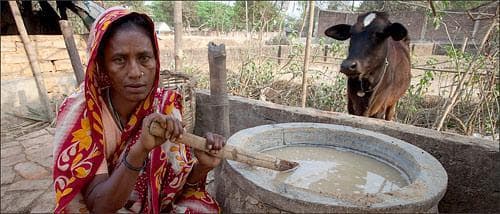Advertisement
How to Live on $2 a Day
Resume
More than 2.7 billion people in the world live on two dollars a day — or less. For most Americans that may sound impossible. Or like a living hell.
In fact, there is much more nuance to it, to that life, than images of hungry kids with tin cups might suggest.
A detailed new study of the planet’s poorest billions finds a lot of sophistication among those poor in handling money. They don’t have much. They have to stretch it. Save it. Borrow and lend. For food, a home, even retirement. On two bucks a day.
We might learn something. This hour, On Point: Half the world, on two dollars a day.
You can join the conversation. Tell us what you think — here on this page, on Twitter, and on Facebook.Guests:
Daryl Collins joins us in our studio. She was project director of the most recent Financial Diaries Project at the University of Cape Town in South Africa, which researched how poor people in South Africa spend, borrow and save. She is also a senior associate at Bankable Frontier Associates, a Boston-based consulting firm that tries to find ways to extend financial services to underserved people worldwide. She is co-author of the new book "Portfolios of the Poor: How the World’s Poor Live on $2 Dollars a Day."
Read the first chapter (pdf) of "Portfolios of the Poor."Stuart Rutherford joins us from Exeter, England. He did the first Financial Diaries project, in Bangladesh, and is co-author of "Portfolios of the Poor: How the World’s Poor Live on $2 Dollars a Day." He's also the author of "The Poor and their Money" (2000) and founder of SafeSave, a non-profit based in Dhaka, Bangladesh that provides saving sevices to the poor there. He has consulted with the world-famous Grameen Bank, the microfinance bank bounced by Nobel Prize winner Mohamed Yunus.
Lufefe joins us from Langa, a township outside Cape Town, South Africa (he asked that we not use his surname). He’s married and a father of two. His wife and children live in their village and he lives in a hostel area and sends money back to them. He has a job, not always steady and makes about 3,000 to 4,000 Rand a month, which translates to about $3 per day for each member of his immediate family.
Below is a slideshow of pictures from Langa Township, near Cape Town, where researchers recruited many of the South Africa study's participants. You can also open the slideshow at full-screen size on Flickr or click on each photo below to view captions. (Photos: Robin Saidman / VitalEdgeAid.org).
http://www.flickr.com/photos/wbur/sets/72157619372502735/
This program aired on June 9, 2009.